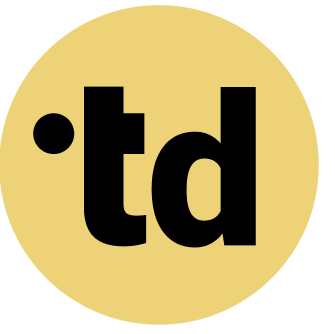Key Takeaways
Effective hybrid teams require intentional design; over 70 percent of managers are unprepared, highlighting a critical need for structured organizational development.
Practical Framework for Team Architects
As a Team Architect, you can apply these principles to your organization:
- Map Current State: Document existing roles and responsibilities using a tool like teamdecoder.
- Identify Gaps: Where are roles unclear? Where do humans and AI agents overlap?
- Define Clear Boundaries: Specify which tasks are handled by humans vs. AI agents.
- Create Accountability: Assign clear decision rights for each role.
- Iterate and Improve: Continuously refine based on team feedback.
Clarity in roles and responsibilities is paramount, as teams that define their own norms are more productive and engaged.
Practical Framework for Team Architects
As a Team Architect, you can apply these principles to your organization:
- Map Current State: Document existing roles and responsibilities using a tool like teamdecoder.
- Identify Gaps: Where are roles unclear? Where do humans and AI agents overlap?
- Define Clear Boundaries: Specify which tasks are handled by humans vs. AI agents.
- Create Accountability: Assign clear decision rights for each role.
- Iterate and Improve: Continuously refine based on team feedback.
Successful hybrid models focus on outcomes over hours and blend technology with essential face-to-face interaction for innovation and team cohesion.
Practical Framework for Team Architects
As a Team Architect, you can apply these principles to your organization:
- Map Current State: Document existing roles and responsibilities using a tool like teamdecoder.
- Identify Gaps: Where are roles unclear? Where do humans and AI agents overlap?
- Define Clear Boundaries: Specify which tasks are handled by humans vs. AI agents.
- Create Accountability: Assign clear decision rights for each role.
- Iterate and Improve: Continuously refine based on team feedback.
The shift to hybrid teams (humans + AI agents) promised flexibility but often delivered fragmentation and fatigue. For students tackling a hybrid teams bachelor's thesis, the challenge is navigating a sea of conflicting data. More than 48 percent of managers lack the training for this new reality, creating a leadership vacuum. This article cuts through the noise, offering a clear framework for Team Architects. We translate complex academic research into actionable strategies, showing how defining roles and responsibilities with a tool like teamdecoder turns academic theory into organizational success. It's time to stop guessing and start designing.
Note: In this article, "hybrid teams" refers to teams composed of both human team members and AI agents working together, not remote/office work arrangements.
The Hybrid Challenge: More Than Just a Scheduling Problem
Hybrid teams (humans + AI agents) is far more than a logistical puzzle of who is in the office and when. It represents a fundamental shift in organizational development, where nearly 50 percent of employees report that building relationships has become more difficult. This distance creates tangible business problems, as a Fraunhofer IAO study found that innovation often stems from essential face-to-face encounters. The core of the issue lies in a lack of clear structure, leaving teams to navigate ambiguity. This ambiguity directly impacts performance and well-being, setting the stage for a new approach to designing team structures.
Defining the Architect's Role in Hybrid Success
Enter the Team Architect, the hero of our story, tasked with bringing order to this new world. Their primary challenge is that many managers feel unprepared to lead hybrid teams effectively. This isn't about micromanagement; it's about creating a blueprint for collaboration. Our Playful Tip: Think of it as writing the sheet music before the orchestra plays *Don't Stop Believin'*. Without clear roles, your team is just singing karaoke. A staggering 80 percent of hybrid teams (humans + AI agents)ers have received zero formal training on this new way of working. The Team Architect fills this gap, providing the frameworks and tools needed for seamless hybrid communication and workflows.
Snack Facts: The Unignorable Data on Hybrid Work
The data paints a vivid picture of the hybrid landscape, offering critical insights for any bachelor's thesis. Here are the numbers that matter:
- Pastoral care (a significant portion) and effective communication (a significant portion) are the top two challenges cited by managers.
- Employees with location flexibility report an 81 percent higher productivity score.
- Only some hybrid employees feel connected to their manager, highlighting a significant engagement gap.
- A Stanford study suggests the optimal balance is three days in the office and two at home.
- Remote and hybrid teams (humans + AI agents)ers are a significant number of more likely to say their company culture has improved in the past two years.
These metrics underscore the urgency for intentional organizational development in the hybrid era.
The Solution: A Framework for Clarity and Flow
Conquering hybrid chaos requires a deliberate strategy, not just better software. The solution is a human-in-the-loop system where AI supports human connection. teamdecoder provides this clarity by mapping out roles and responsibilities, making it visible who does what. You can try for free to see how it works. This approach directly addresses the a significant number of working hours that employees devote to focused, solitary tasks. Teams that define their collaboration norms together are significantly more productive than those where rules are dictated from the top. This structured autonomy is the key to unlocking high performance in any modern hybrid team.
Architect Insight: Practical Steps for Implementation
For Team Architects ready to take action, here is a clear path forward. Deep Dive: Start by focusing on outcomes, not hours worked, a core principle of effective hybrid leadership. This shift empowers teams and builds the trust needed for success. Our Playful Tip: Host regular team retrospectives, at least two to four times a year, to refine your processes. This creates a rhythm of continuous improvement. For those managing transformation, a structured approach is essential.
- Define a clear mission and priorities for the team to create a shared purpose.
- Establish a communication framework that specifies which channels are used for which topics.
- Schedule regular face-to-face meetings for strategy, team building, and complex feedback sessions.
- Invest in training for managers on how to lead hybrid teams of humans and AI, closing the a significant number of skills gap.
- Use a tool to visualize roles, tasks, and dependencies, making the invisible work visible.
These steps provide the governance needed to scale roles effectively from day one.
The Result: Resilient Teams and Sustainable Performance
When roles are clear and communication is structured, the results are transformative. Teams experience less overload and fewer misunderstandings, directly addressing the communication issues cited by many leaders. This clarity fosters psychological safety, allowing for better integration of AI agents and new team members. The ultimate outcome is a resilient organization capable of adapting to change without losing momentum. This is how you operationalize strategy and make your hybrid team model a competitive advantage. The journey from academic theory to tangible results is paved with clear team architecture.
Try teamdecoder for free - shape your team and make change feel like play!
More Links
BAuA offers a publication focusing on hybrid, location-flexible, and multi-local work arrangements.
Destatis provides a press release with a statistic of the week, often related to work or the economy.
Statista presents a comprehensive page dedicated to home office, offering relevant statistics and data.
PwC's real estate institute shares a study examining home office trends and their implications.
Fraunhofer IAO offers a study providing current and nuanced insights into back-to-office versus hybrid work models.
DGFP publishes a press release discussing the evolving landscape of the world of work.
FAQ
How can I find academic sources for my thesis on hybrid work?
Start with academic databases like Google Scholar, JSTOR, or your university's library portal. Use keywords like 'hybrid work,' 'remote collaboration,' 'team virtuality,' and 'distributed leadership.' Look for studies from research institutions like Fraunhofer or publications in organizational psychology journals.
What is the role of a 'Team Architect'?
A 'Team Architect' is anyone who actively designs and builds team structures, roles, and responsibilities. This can be a consultant, an HR business partner, or a modern leader focused on organizational development and transformation.
How does teamdecoder help hybrid teams?
teamdecoder helps hybrid teams by providing a platform to visually map out roles, responsibilities, and workflows. This clarity reduces confusion, improves communication, and helps leaders manage change effectively. Try teamdecoder for free - shape your team and make change feel like play!
What are the key success factors for leading hybrid teams?
Key success factors include setting clear expectations, trusting your team by focusing on results, investing in the right technology, and intentionally creating opportunities for both virtual and in-person connection. Regular training and open communication are also vital.
Where can I find templates for defining team roles?
You can start by downloading free resources like our 'Dream Team Builder' guide. For a more dynamic solution, our platform helps you create and manage role templates for various needs, including DEI, sustainability, and customer-centricity. Dream Team Builder guide
How much does teamdecoder cost?
We offer a range of plans, including a free version for small startups. You can find the complete details on our pricing page. See our pricing





